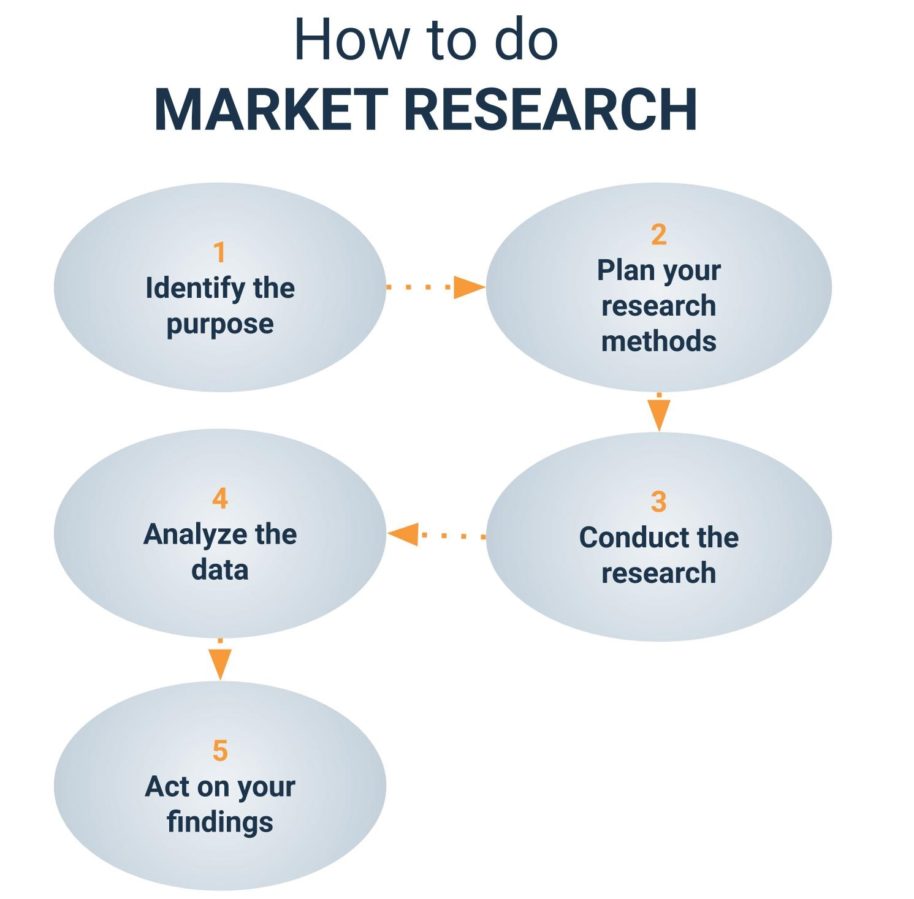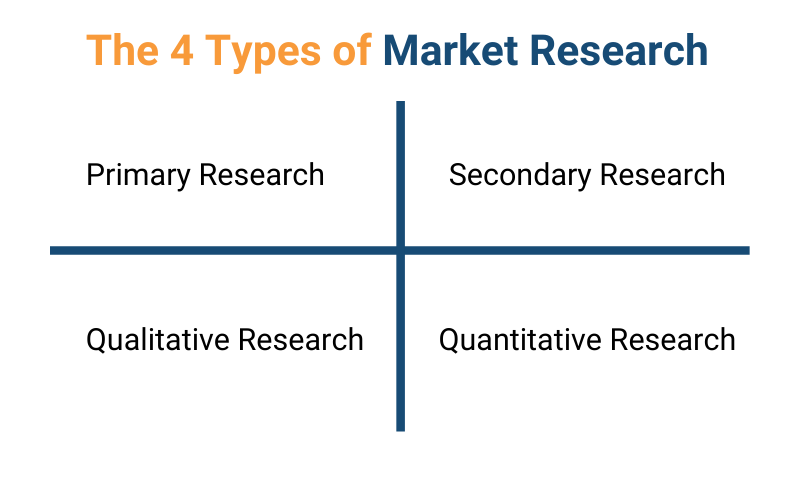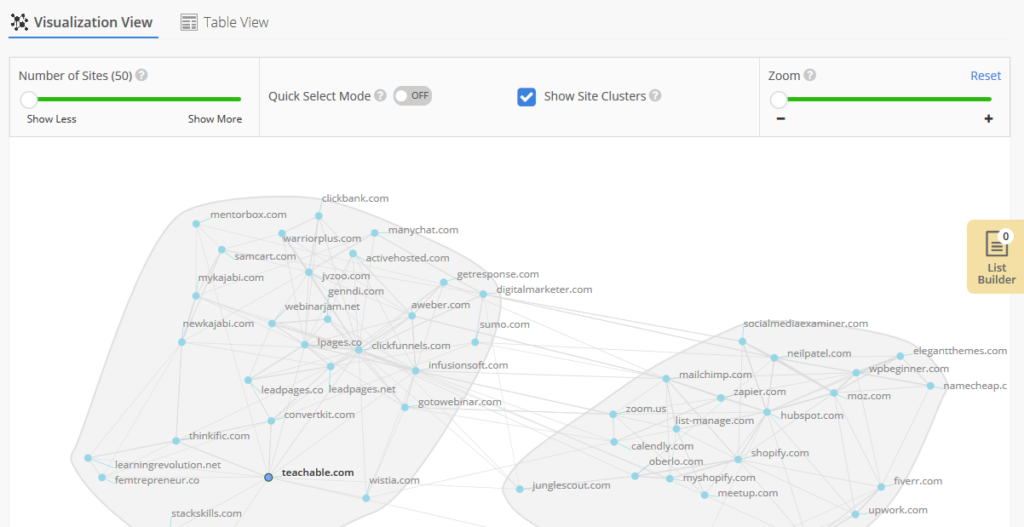Learning how to do market research better than your competitors equips you to outperform them. A strong market research process helps you understand your audience, understand their needs, and position your products and services to serve them better.
With these insights, you can improve your marketing strategies and rise above competitors who don’t fully understand their market or target audience.
This post looks at how to do market research, including which sites and tools to use to gather valuable customer data during your research.
What is Market Research?
Market research involves gathering information about your industry, customers, and competitors to make informed decisions. Small business owners use the data they collect to create a business plan. For instance, big companies may engage a market research firm to manage customer and industry information when introducing a new product.
Market research involves gathering information about your industry, customers, and competitors so you can make informed decisions.Click to tweet
Market research is an essential component when you conduct a market analysis. It can be helpful when starting a new business, creating buyer personas, gauging customer satisfaction, or evaluating the competitive forces in an industry.
4 Types of Market Research
Consider tapping into several types of market research to understand consumer behavior and real-world concerns in your industry. Collect various types of data to provide a complete picture.
Tap into several types of market research to understand consumer behavior and real-world concerns in your industry.Click to tweet1. Primary Research
Primary market research is also known as first-party data. This is data you collect about your customers, potential customers, or business on your own. This is often gathered via online surveys or customer interviews (especially useful when a company is introducing a new product). You own and manage this data yourself.
Examples of primary market research include:
- Focus groups
- Interviews
- Polls
- Surveys
This market research can help strengthen your marketing strategy with data and information directly from your customers. It’s arguably the most valuable type of market research because it’s particular to your customer base. This lets you get candid details on business strengths and weaknesses to understand the customer experience.
Good examples of primary research are online surveys and polls, which are great ways to get many responses from your customer base. Maybe there’s a question about your product or service that you’re dying to get feedback on.
Well, why not ask your customers directly? You can broadcast your survey or poll on a social media channel or add it to an email newsletter you send to subscribers. A larger response like this will help you determine your customer base is thinking, and you can identify shared pain points or praise they may have.
2. Secondary Research
Secondary research refers to existing data you can use to inform your research. This includes data from second-and third-party sources. Second-party data is data another brand collects about its customers or business. It is that brand’s first-party data, and it becomes second-party data when your company or another brand purchases it from them.
Examples of secondary market research include:
- Articles
- eBooks
- Infographics
- Videos
- White papers
This type of market research can help you get a better understanding of your industry as a whole. You’ll be able to identify how competitors operate, vital industry statistics, and other valuable insights that you can use to help create a more informed marketing strategy overall.
Secondary research is the best way to get a feel for the data and information that already exists within your industry and among your competitors. Identifying that data and knowledge gives you a better idea of what you’re up against from a marketing perspective and where you might be able to improve.
Maybe a competitor has written a great article that’s bringing in a lot of organic search traffic or social shares, and there’s an opportunity for you to formulate a counter-argument that has the potential to be similarly popular. That contrary point-of-view shows that you understand your competitor’s content and are willing to step in with an original perspective to add to the more excellent dialogue surrounding the topic.
A high-end watch company is interested in tapping into a new or related niche market. It can turn to other companies for second-party data if the customer base overlaps, but the two companies don’t compete. For example, the watch company commissions a study on the customers of a yacht company.
Third-party data is collected by organizations with no direct relationship with the research subjects. Think of associations that conduct research by surveying members about their customers. They rely on their members to provide the data. This gives them access to a lot of data—but it also means there may be inherent quality limitations.
Other sources of third-party secondary research include studies based on customer usage of social media platforms, such as that by consumer brand L’Oreal. It also includes reports by consulting firms like McKinsey and third-party data marketplaces like that offered by Salesforce.
3. Qualitative Research
Qualitative research refers to the collection of data with no measurable quantity. The descriptive data focuses on understanding behavior, motivations, and other human qualities. When you research buyer attitudes, you are conducting qualitative research.
Qualitative research can be primary or secondary. You can use primary market research methods such as interviews, polls, and surveys to determine how customers feel about your product or service. The goal is to understand how they think.
You can ask open-ended questions like:
- What made you buy our product or service?
- How do you think our product or service stands up to competitors?
- What features do you like about our product or service, and why?
- What areas do you think our product or service could improve and why?
This type of market research gives us insight into what customers are thinking; it’s the only way to discover why a customer decides to trust your or another brand. When you conduct customer research, you can ask customers specific questions about your product or service. The answers to these questions will help you form better marketing strategies that consider all their feelings and thoughts about your product or service.
A great way to utilize qualitative research is to do it during a product launch. The goal is to get as much customer feedback about your new product as possible. Qualitative research can help gauge whether it has met customer expectations or falls short. If it does fall short, dig deeper and find out in what areas it doesn’t meet customer expectations. Is it a quality issue? Price point? Are competitors offering better products? Qualitative research gives you that critical insight into how customers feel about your product or service.
Qualitative research can help you gauge whether your product has met customer expectations or falls shortClick to tweet4. Quantitative Research
Quantitative research, on the other hand, is concerned with collecting numbers for statistical analysis. Data like industry sales, U.S. Census figures, and even the number of social media followers or website visitors are considered quantitative.
Like qualitative research, quantitative research can be primary or secondary.
This market research is about having the figures to back up your marketing strategy. The stats aren’t interpretations, they’re empirical evidence. Quantitative market research can look like this:
- Bounce rate
- Pageviews
- Share of voice
- Social media followers
- Social media engagement
- Subscribers
This data can act as a benchmark for where to spend more time and money in your marketing efforts. Once you know where you stand in a market among specific dimensions like pageviews or subscribers, you can adjust your marketing strategy accordingly to reflect your findings.
Unlike some of the other types of market research featured in this article, quantitative analysis has a distinct advantage in that you can use analytics platforms to track your progress. For example, BuzzSumo’s Content Exploration tool allows you to enter a site and see how much engagement its content gets on Twitter and Facebook. You can then compare these metrics side-by-side with other sites in your industry.
How to Do Market Research: A 5-Step Guide
Market research allows marketers to collect data and analyze their audience and target audience.
The following steps in marketing research will help you fully understand your audiences and their needs.
- Identify the purpose
- Plan your research methods
- Gather your market research
- Conduct market analysis
- Take action
Let’s look at each step more in-depth.
1. Identify the Purpose
The first step in how to do market research is articulating what you want to find out. The purpose may be to understand your target audience’s issues, problems, and concerns. It may be to support the creation of buyer personas. Or it could be to measure attitudes toward a product or changing forces in a market.
For example, the soda market has declined for several years as Americans turn to healthier alternatives. Soda companies might do market research to understand better what customers want and develop marketing strategies to capitalize on this customer behavior.
In the market research process, they might discover that consumers are buying smaller cans and bottles, which is more profitable for companies. Learning why customers are opting for smaller, individual bottles instead of choosing liters and packs of cans would help them reposition their product to appeal to that desire. You may also discover a viable target consumer you hadn’t considered. In this case, research shows the occasional soda consumer may be a likely market.
2. Plan Your Research Methods
Once you have a concrete question you want to address, the next step is to choose your marketing research and analysis method. While most people might think about the “Mad Men” era of focus groups and consumer interviews, the modern digital age makes it easy to collect various information related to your query.
Data collection is one of the essential parts of market research. Note that data collection will be different for every company. Your organization might not be big enough to collect first-party data and must rely on second and third-party sources. And depending on your marketing objectives, some research tactics will be more fruitful than others. See examples of research methods below.
3. Conduct Market Research
If you’ve never done market research before, keep an open mind to find what works best for your unique market and discovery goals. Start with the options below. As results unfold, you can fine-tune how to do market research online.
Send Out Surveys to Understand Customer Sentiment
The most common tool companies use in audience analysis is online surveys. Most survey software platforms are free or cheap, and you can export the data for easy manipulation. Whether you’re asking a few specific questions or sending out extensive surveys with open-ended questions to tap into the customer’s mind, you can have a treasure trove of first-person data in just a few days.
See What Website Visitors Are Doing on Your Site
Tools like Google Analytics enable tap into online market research without disrupting your customers. Check out some of the options available through web analytics tools, which allow you to monitor engagement rates and customer behavior. You can use this information to make marketing decisions based on data-backed proof of customer interests.
Learn About Your Website Demographics
Google Analytics can also help you learn about the demographics of your website visitors. Under the Audience Reports, you can view demographics like age and gender.
To learn more about those interested in your brand, check for insights on any social profiles you have. For example, on your business’s Facebook page, you can navigate to the Insights tab, then click on “People” from the left-hand menu to see the age and gender of your fans, country, city, and language preferences.
See Your Audience’s interests.
Alexa tools also help you gain insight into your audience’s other interests. Using an Audience Overlap Tool, you can see what other websites your audience uses frequently. Enter your site URL (or the URL of other sites your target audience regularly visits). The report will display a visual map of other sites with similar audiences.
From this information, you can see what other interests your audience has by looking for trends in the websites they frequently visit.
Run Experiments and A/B Tests to Analyze Customer Behavior
If you have an idea of how customers will react to a particular option, product, or layout, test it with online customers. You can use heatmap tools or invest in A/B testing software that shows customers two opportunities to see how they behave. You can also test your products and services to see if they catch on. This is more cost-effective than investing in changes to your brand or website only to realize your customers hate it.
Research Top Competitor Search Terms
As you learn how to do market research, remember to look at your audience and competitors. There are multiple ways to track your competitors. Tools like Ahrefs and Semrush help you see what keywords drive your audience to your competitors’ sites. From an SEO perspective, you can go after these keywords.
Popularity and competition of search terms related to the online education industry
From a market research perspective, you can learn what problems your competitors address and how they meet the needs of consumers you’re missing out on.
Check the Digital Footprint of Your Competition
Alexa also has other tools to help you gain insight into a competitor’s footprint online. The Competitor Backlink Checker allows you to see who is linking to other sites that are competitors or share an audience similar to yours.
Through backlink analysis, you can learn about your competitors’ marketing strategies and start to mimic some of their link-building strategy.
4. Conduct Market Analysis
Before you can use your market research, you need to analyze it. This is where you put the collected data into a helpful decision-making format.
The type of analysis you’ll conduct depends on the information you collect. For example, qualitative data analysis techniques will be necessary if you study buyer attitudes. These techniques find themes in otherwise unmeasurable data.
Learn more about using analysis frameworks such as SWOT analysis.
5. Take Action
The final step in market research is taking action based on your learning.
Will you adjust your product and messaging?
Appeal to a new target audience?
Ramp up your customer service. Consider trends in data and identify customer habits and desires to find ways to adjust your offerings and market positioning.
For example, consider the research about millennials. Brands are adjusting as they realize that this generation prefers experiences over things and living together before they get married. Few people want gifts at weddings or need home essentials like oven mitts or toasters.
More wedding registries are offering honeymoon options in response to customer trends and market research like this. Additionally, hotels and airlines are setting up their wedding registries, where guests can buy experiences for couples.
How to Do Market Research for Your Brand
Data guide the best marketing plans. Information about your target audience, competitors, and industry helps you get to know your market and identify trends that will shape your marketing tactics and brand positioning. There are dozens of tools available to help marketers accomplish this. See our list of the best sites for market research.
Revisit Your Market Research Regularly
Remember, the dynamics of your market can change rapidly and often without much warning. That’s why it’s always essential to ensure you’re regularly conducting the market research process. This will help you stay up-to-date with your industry, customers, and competitors at all times, which will, in turn, help you create more robust marketing strategies.
Source: blog.alexa.com








